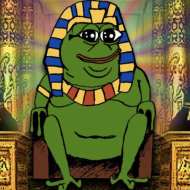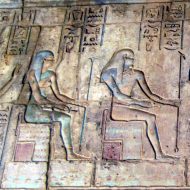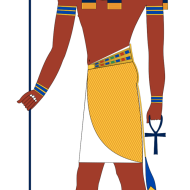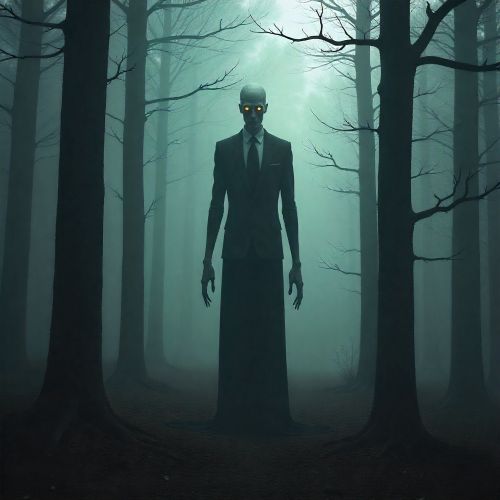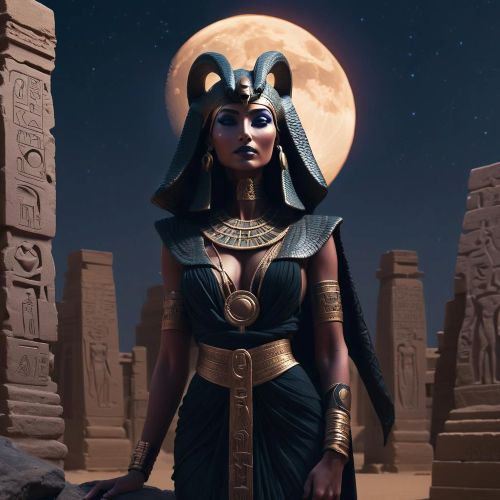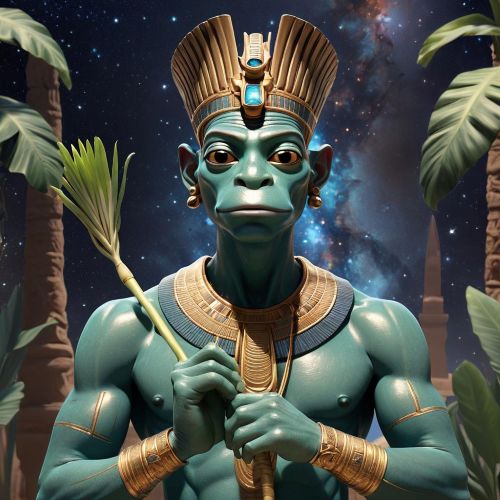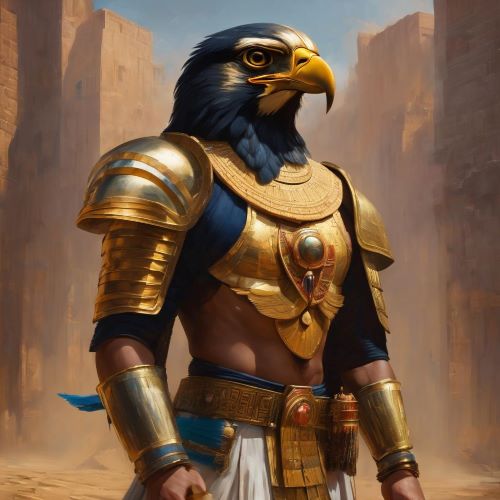Kek : The God of Darkness
Listen
At a glance
| Description | |
|---|---|
| Origin | Egyptian Mythology |
| Classification | Gods |
| Family Members | Kauket (Wife) |
| Region | Egypt |
| Associated With | Darkness, Creation |
Kek/Kauket
Introduction
In Egyptian mythology, Kek and Kauket hold a unique and mysterious place. Known as the deities of darkness, obscurity, and the night, they were part of the Ogdoad of Hermopolis, an ancient cosmogony that explained the origins of creation. Unlike the more popular gods such as Ra, Osiris, or Isis, Kek and Kauket existed in the shadowy space before time itself began. They symbolized not evil, but the limitless void and uncertainty that existed before the rising of the sun and the birth of the ordered world.
The Ogdoad—four male-female pairs representing the elemental qualities of chaos—was a belief system that thrived in Hermopolis (Khmunu). Each pair represented dual aspects of primordial existence: Nun and Naunet symbolized the watery abyss, Amun and Amaunet represented hiddenness, Heh and Hauhet embodied infinity, while Kek and Kauket personified the cosmic darkness. Together, these eight deities formed the foundation of creation itself, preparing the way for the emergence of Ra, the sun god.
Physical Traits
Depictions of Kek and Kauket reflect their dual nature. In Egyptian art, the male deities of the Ogdoad—including Kek—were often shown with the heads of frogs, while the female deities—such as Kauket—were represented with serpent heads. This imagery tied them to the fertile waters of the Nile and the mystery of life hidden within chaos.
The frog, with its association with transformation and emergence from water, symbolized potential and rebirth. The serpent, meanwhile, was linked to mystery, concealment, and cyclical renewal. These forms made Kek and Kauket guardians of thresholds—between night and day, chaos and order, death and rebirth.
They were also associated with directions in the cosmic map of the Ogdoad. Kek and Kauket were linked with the south, where the interplay of darkness and light was believed to shape the balance of creation. Their physical traits highlight their roles as liminal figures, embodying the mystery of what cannot be seen, yet always present.
Family
Kek and Kauket belonged to the Ogdoad, literally meaning “the eightfold,” a primordial group of deities from Hermopolis. Unlike later Egyptian myths that centered on family drama among the gods, the Ogdoad were conceptual—representing the forces of existence itself.
Before the world came into being, the universe was thought to be a chaotic sea known as Nun. Within this sea lived the Ogdoad, embodying darkness, infinity, hiddenness, and the primordial waters. Kek and Kauket were the masculine and feminine principles of darkness, complementing each other in eternal balance.
According to myth, from this infinite darkness emerged a cosmic lotus flower floating on the waters. From the lotus bloomed Ra, the sun god, who brought light and life to the cosmos. With his arrival, the Ogdoad stepped back into the shadows, continuing to dwell in the underworld but supporting the balance of creation. Kek and Kauket thus represent the eternal backdrop to existence—the night that allows the dawn to shine.
Other names
The names Kek and Kauket come from the ancient Egyptian word kkw, which translates directly as “darkness.” Hieroglyphic variations show the ligature of the sky symbol with a staff, emphasizing their connection to cosmic obscurity. Kek is sometimes transliterated as Kuk or Keku, while Kauket appears as Kauket or Keket. The feminine form of Kek’s name simply added the “-et” ending, a common marker for female deities in the Egyptian language. Despite their shadowy roles, their names were not associated with evil. Instead, they were neutral forces of the cosmos, representing the necessary balance of hiddenness and light.
Powers and Abilities
Kek and Kauket’s power lay in their dominion over the unseen. Kek embodied the absence of light, the mystery of what lies beyond perception, and the unknown chaos before creation. Kauket, as his female counterpart, carried the same essence but also symbolized the nurturing potential hidden in the night.
In Egyptian cosmology, Kek played a role in guiding Ra’s solar barque at night, helping usher the sun through the darkness so that it could rise again at dawn. Kauket, in contrast, was associated with twilight, bringing the evening into being as day gave way to night. Together, they marked the transitions of the sun’s eternal journey, ensuring balance between illumination and shadow.
Their connection to twilight is particularly symbolic. Twilight is neither fully light nor fully dark; it is a liminal space where opposing forces mingle. As mediators, Kek and Kauket represented the eternal balance between order and chaos, life and death, visibility and obscurity.
Modern Day Influence
Unlike Ra, Isis, or Osiris, Kek and Kauket did not have major temples or widespread worship. They were not personal gods invoked in daily life but rather cosmic forces acknowledged in rituals and funerary texts. Priests sometimes called upon them to aid in maintaining balance or to protect travelers in the underworld.
However, their influence has endured in surprising ways. In the modern era, the name Kek has found an unexpected place in internet culture. The term originated as a gaming slang for “lol,” derived from Korean online games like World of Warcraft. Over time, it became connected with the frog-meme figure “Pepe,” with some online subcultures humorously linking Kek to an ancient Egyptian frog-headed god. This ironic association gave rise to the idea of “meme magic,” where Kek was jokingly credited with influencing world events through internet memes.
Although this modern use of Kek is far removed from Egyptian mythology, it reflects the same fascination with the unseen and mysterious forces shaping reality. Just as Kek once represented the unknown darkness before creation, he now symbolizes, for some, the unpredictable power of the digital age.
Related Images
Sources
Allen, J. P. (2000). Middle Egyptian: An Introduction to the Language and Culture of Hieroglyphs. Cambridge University Press.
Hornung, E. (1999). The Ancient Egyptian Books of the Afterlife. Cornell University Press.
Pinch, G. (2002). Handbook of Egyptian Mythology. ABC-CLIO.
Wikipedia contributors. (2025). Kek (mythology). In Wikipedia. Retrieved from https://en.wikipedia.org/wiki/Kek_(mythology)
Wilkinson, R. H. (2003). The Complete Gods and Goddesses of Ancient Egypt. Thames & Hudson.
Frequently Asked Questions
What was Kek the god of?
Kek was the ancient Egyptian god of darkness and chaos, representing the primordial darkness before creation. He was part of the Ogdoad of Hermopolis, symbolizing the unknown night and the transition to light.
Who is Lord Kek?
Lord Kek is an internet meme figure based on the ancient Egyptian god Kek. In online culture, especially on forums like 4chan, he became associated with a frog-headed deity linked to the meme character Pepe the Frog, symbolizing chaos, luck, and internet culture.
What does Kek look like?
In Egyptian mythology, Kek is usually depicted as a man with the head of a frog or a woman with the head of a snake. These forms symbolize his dual aspects of darkness and transformation.
Was Kek evil?
No, Kek was not considered evil. In Egyptian mythology, he represented primordial darkness and chaos, but this was seen as a natural state before creation, not as something malevolent.
What role did Kek play in Egyptian mythology?
Kek was part of the Ogdoad, a group of eight primordial deities, and symbolized the darkness before the first sunrise, playing a key role in the creation myth.


